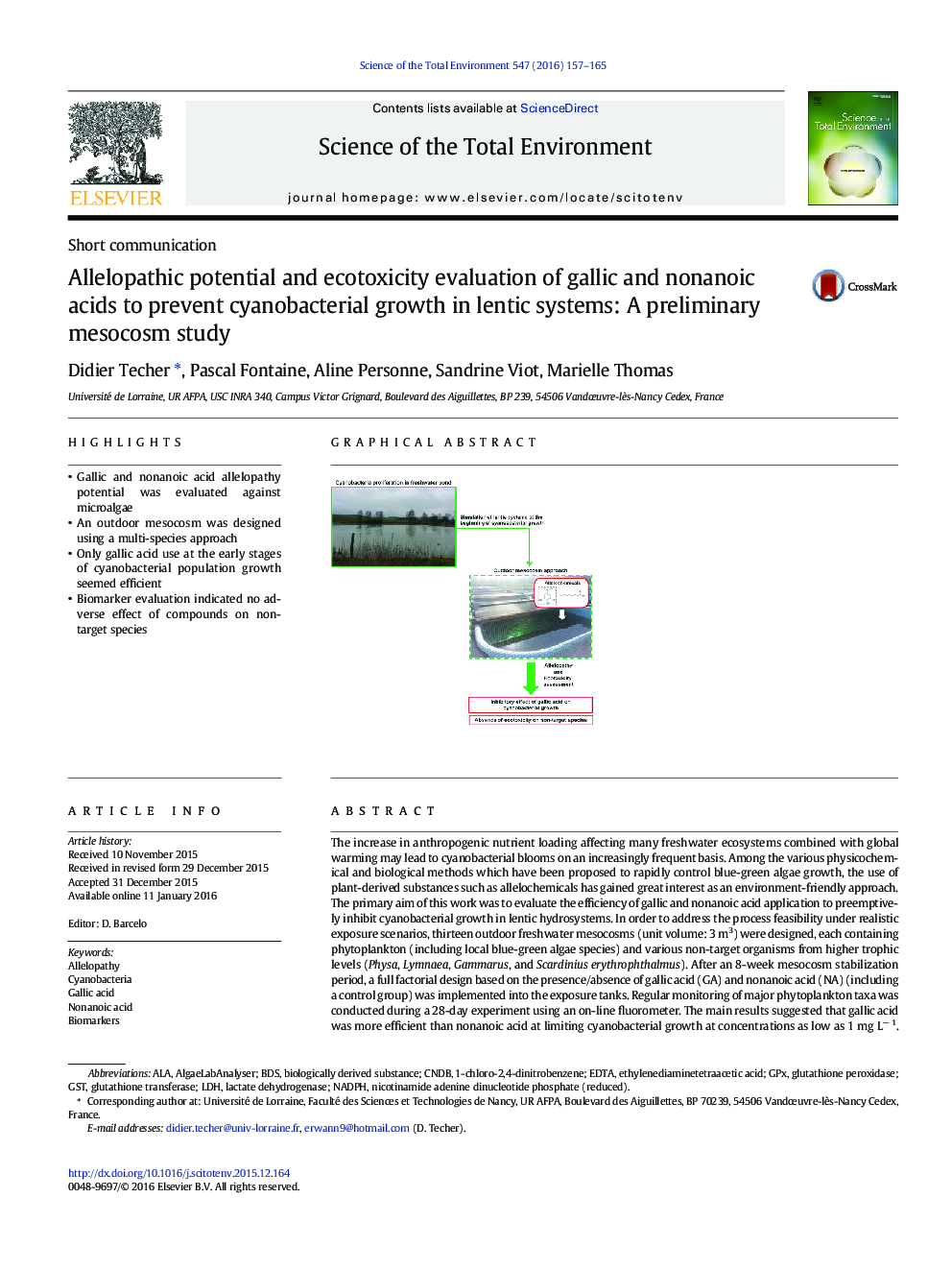| کد مقاله | کد نشریه | سال انتشار | مقاله انگلیسی | نسخه تمام متن |
|---|---|---|---|---|
| 6323436 | 1619736 | 2016 | 9 صفحه PDF | دانلود رایگان |

- Gallic and nonanoic acid allelopathy potential was evaluated against microalgae
- An outdoor mesocosm was designed using a multi-species approach
- Only gallic acid use at the early stages of cyanobacterial population growth seemed efficient
- Biomarker evaluation indicated no adverse effect of compounds on non-target species
The increase in anthropogenic nutrient loading affecting many freshwater ecosystems combined with global warming may lead to cyanobacterial blooms on an increasingly frequent basis. Among the various physicochemical and biological methods which have been proposed to rapidly control blue-green algae growth, the use of plant-derived substances such as allelochemicals has gained great interest as an environment-friendly approach. The primary aim of this work was to evaluate the efficiency of gallic and nonanoic acid application to preemptively inhibit cyanobacterial growth in lentic hydrosystems. In order to address the process feasibility under realistic exposure scenarios, thirteen outdoor freshwater mesocosms (unit volume: 3 m3) were designed, each containing phytoplankton (including local blue-green algae species) and various non-target organisms from higher trophic levels (Physa, Lymnaea, Gammarus, and Scardinius erythrophthalmus). After an 8-week mesocosm stabilization period, a full factorial design based on the presence/absence of gallic acid (GA) and nonanoic acid (NA) (including a control group) was implemented into the exposure tanks. Regular monitoring of major phytoplankton taxa was conducted during a 28-day experiment using an on-line fluorometer. The main results suggested that gallic acid was more efficient than nonanoic acid at limiting cyanobacterial growth at concentrations as low as 1 mg Lâ 1. Successive gallic acid applications (at 1, 2 and 4 mg Lâ 1) at the early stages of cyanobacterial growth did not allow the complete elimination of blue-green algae from the mesocosms. However, the specificity of the allelopathic effect of gallic acid towards cyanobacteria was compatible with the maintenance of a primary productivity in the treated tanks as indicated by the photoautotrophic growth of other algal taxa. Finally, no biomarker induction signal could be reported in non-target species. Further gallic acid application trials in lentic systems such as small freshwater ponds may help to design innovative allelopathy-based aquatic ecotechnologies.
153
Journal: Science of The Total Environment - Volume 547, 15 March 2016, Pages 157-165